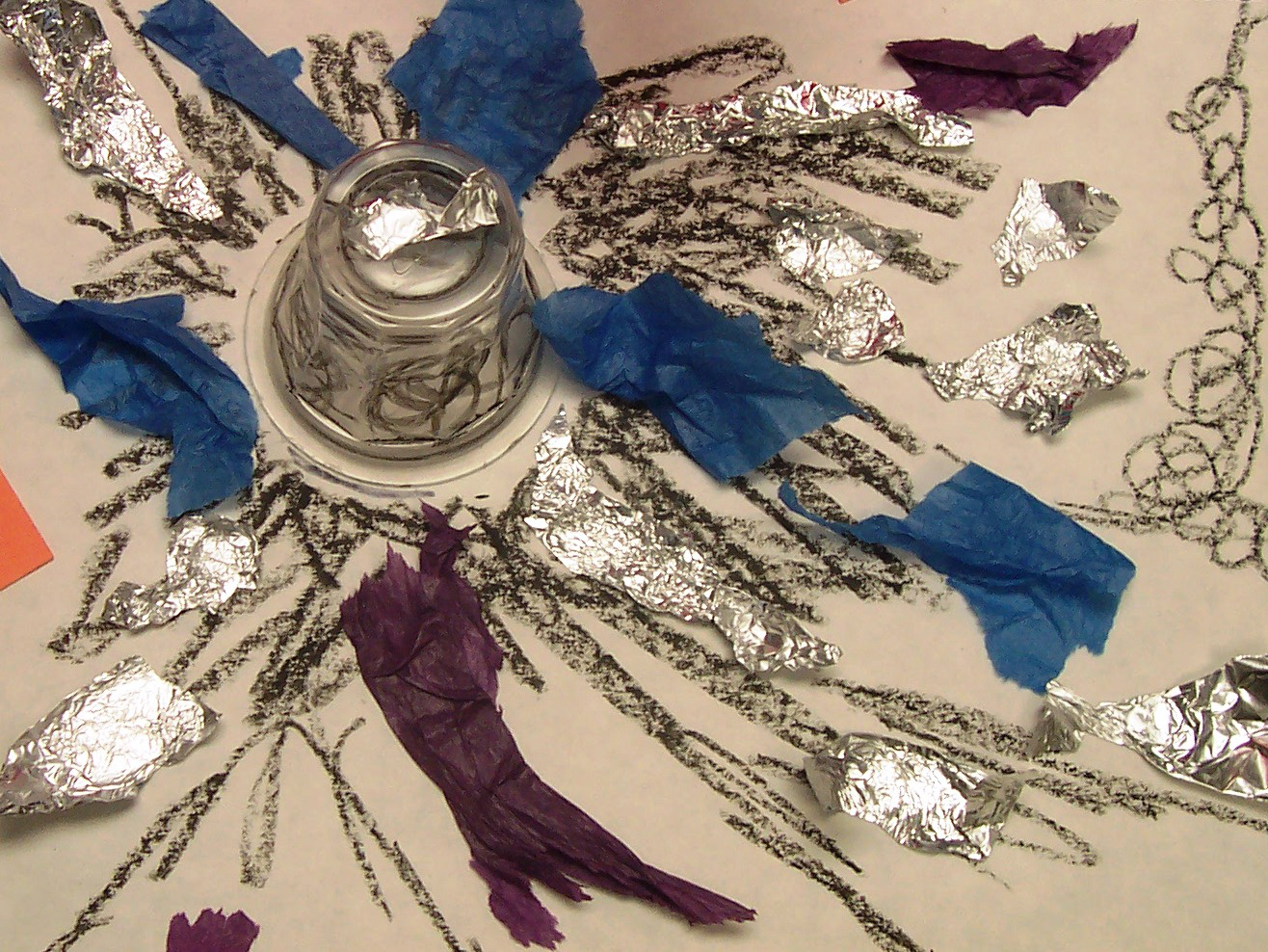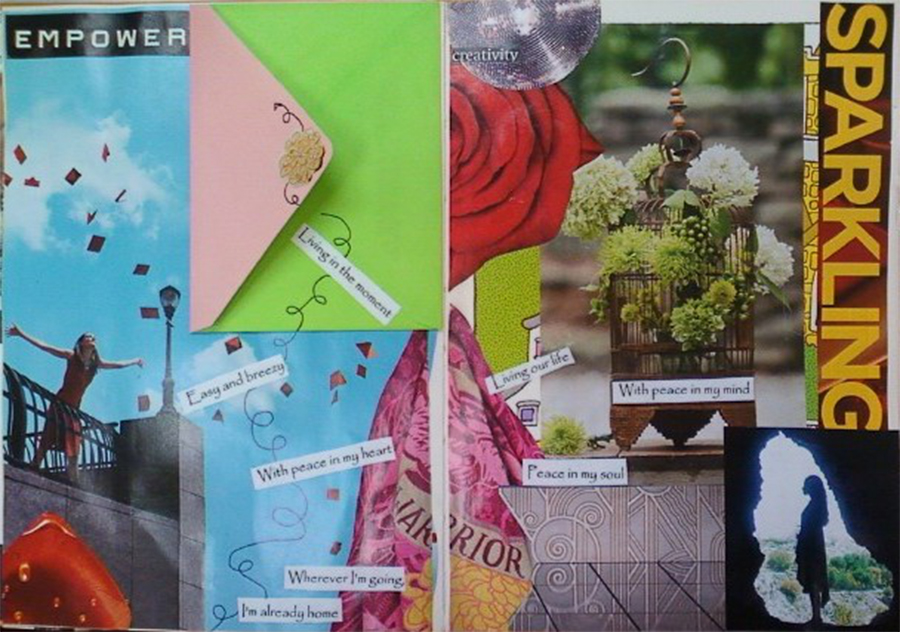Using Art for Inner Healing
/May is National Mental Health Awareness Month, as proclaimed by President Barack Obama.
We join the nation in the campaign for a better and deeper understanding of mental health issues, which affects the Filipino American community as much as it does other communities.
Art Response: Using mixed media to express bottled up aggravation
Words alone may not do justice to your emotional experience. Fortunately, clinical art therapy can provide an outlet for nonverbal expression through art, allowing images to reflect what you’re going through, within the safety of a therapeutic setting.
I’m very aware of the stigma attached to seeking professional mental health help, especially in the Filipino community—and of the power of hiya (shame). Studies show, regardless of acculturation level, traditional cultural values appear to strongly shape attitudes against seeking psychological treatment. The belief that family issues should stay within the family contradicts western psychotherapy norms that support self-disclosure and autonomy. Limited knowledge about available services or lack of therapists who speak the same language may also discourage individuals from seeking mental health services.
Art Response: Using mixed media to explore a difficult relationship
In sharing my experience with using art therapy with Filipino clients and their families, I hope to demystify misconceptions about art therapy, share its benefits on supporting clients’ emotional wellbeing, and spread awareness that there are culturally sensitive mental health services out there. And at least, you’ll know of one art therapist who will happily conduct sessions in English and Tagalog.
Art therapy for mental health explores emotions by incorporating the use of art media, the creative process and the resulting artwork. Sessions are facilitated by a clinical art therapist with a master’s degree specializing in art and psychotherapy. The therapist develops art directives that are designed to have a direct impact in pursuing treatment goals.
Art therapy is used in private practice, mental health agencies, schools, hospices, prisons and disaster relief efforts. When the tsunami hit Japan in 2011, for example, my art therapy supervisor made multiple trips there to help survivors process their grief, recovery and trauma through art. The resulting artworks expressed what words alone could not and were honored for the personal meaning they held.
Art Response: Grief released through chalk pastels and watercolor
Many have asked me
for whom art therapy works best. I believe in the healing power of
art for all, especially in clients who claim to not be
“artistic,” because they draw from a place that is raw and
spontaneous, rather than trying to make something look “pretty.”
When given freedom of expression in a safe space, the client is in a
zone of creativity. This key component is known as “art as
therapy,” emphasizing the process and emotional release that comes
from the tactile manipulation of art media in a therapeutic setting.
The other key component is “art in therapy,” which emphasizes the product. The artwork is used as a reflective tool to develop a deeper understanding of what was expressed. With the client, the art is further explored by the therapist who is trained to be attuned to metaphors in the art. It may unleash a flood of memories, all for the client to choose when to share. It may offer validation and insight as most feel understood once confronted with visuals of their experience. All art expression is accepted and the client’s emotional wellbeing is supported.
Art Response: Using collage images as visual affirmations
Cultural Conflicts
When I interned at a community mental health agency, I had two Filipino clients. One was a girl, recently adopted by a Caucasian family. Adoptive mom was worried her daughter was too shy and needed social skills training. I shared, from a cultural standpoint, how her daughter’s family of origin may not have upheld emotional expressiveness and assertiveness. Perhaps, she could use art to communicate her feelings. For months we sat in silence, but her art spoke volumes about adjusting to a new family and values. In family sessions they collaborated on art to release grief, reduce anxiety, and express the strengths of their blended family.
I also worked with a teenage boy whose mom was concerned that they disagreed on his plans for the future, both claiming they’d never understand each other due to a "generation gap." The son quickly took to using art to express his frustration, but his mom appeared hesitant, often deflecting with, “I don’t know.” The breakthrough came when I invited the family to speak in Tagalog. Like a huge weight was lifted, his mom was suddenly thrilled to come in, and shared how her cultural values shaped her (well-intentioned) expectations for his future. Our sessions were a mix of English, Tagalog and metaphors in their art, and I saw the significance of us being able to communicate in multiple ways.
In both cases, I observed how conflicting cultural expectations and parenting styles contributed to each family’s communication breakdown. The art facilitated symbolic communication where they could express themselves authentically, at their own pace. It was not a forced confessional, and we agreed to maintain the confidentiality of everything they chose to share. Each week they bonded through the art-making, and the art served as visual evidence of their progress in treatment. This interplay of creativity and catharsis is what I love witnessing in my sessions.
What Art Therapy Is Not
Art therapy can best be summarized for what it is and what it is not: It is about drawing from within, not arts & crafts, or an art contest. A variety of art materials is provided, but it is not an art class. It is effective for all ages and populations, not only for the “creative, artistic” kids. It requires no previous experience with art, and the artwork is not judged as “pretty” or “good enough.” The art will be a reflection of what needed to be expressed, not to be used for an exhibit or fundraising. Interpretation is based on the personal meaning attached to the art, not from a codebook of colors and feelings.
All art expression is accepted and the client’s emotional wellbeing will be supported. But to truly understand the healing power of art therapy is to experience it firsthand. I invite you to participate in an art exploration of you when you’re ready.
*All the art responses were photographed and reprinted with permission of the creator.
Nephthys Resurreccion received her M.A. in Marital & Family Therapy with a Specialization in Clinical Art Therapy from Loyola Marymount University. Her private practice is in Long Beach, CA. She provides psychotherapy & art therapy for teens, adults, families, and groups. Supervised by Madoka Urhausen, M.A. LMFT, ATR-BC. info@clearmirrorguidancecenter.com (562) 676-7422






